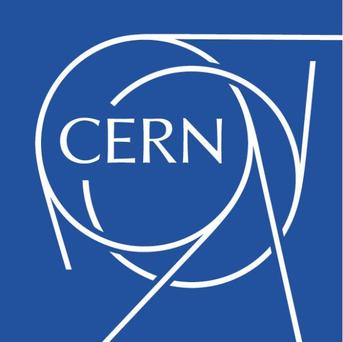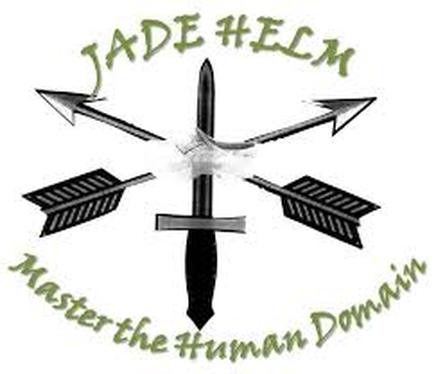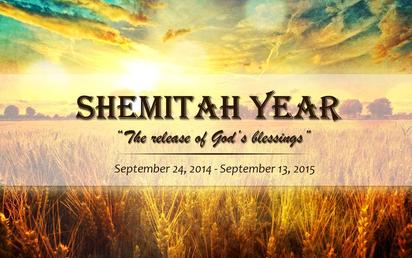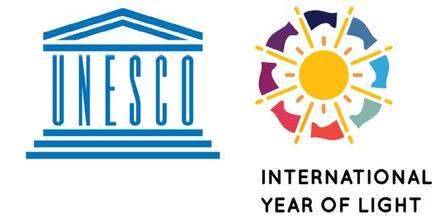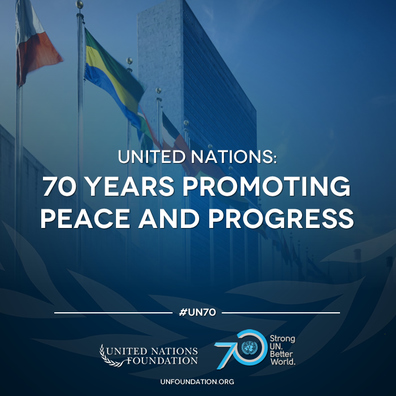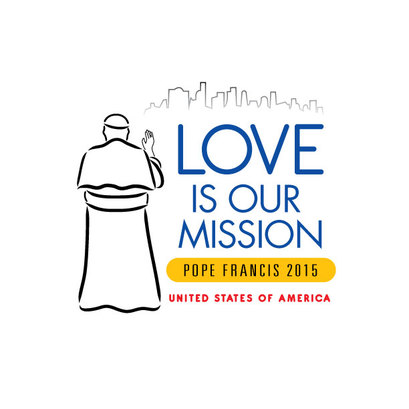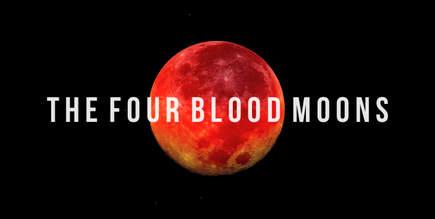#7 - CERNAt CERN, the European Organization for Nuclear Research, physicists and engineers are probing the fundamental structure of the universe. They use the world's largest and most complex scientific instruments to study the basic constituents of matter – the fundamental particles. The particles are made to collide together at close to the speed of light. The process gives the physicists clues about how the particles interact, and provides insights into the fundamental laws of nature. |
#8 - Jade Helm 15
U.S. Army Special Operations Command will take point on a large-scale training exercise in Texas — or if you believe some fringe outlets, they'll take point on the Pentagon's preparation for civil war.Jade Helm 15, as the exercise is called, will run through Sept. 15 and will involve unconventional warfare involving Army special operators, as well as representatives from the other services. It will focus on enhancing team-level elements' abilities to operate in unconventional warfare well-removed from company- and battalion-level organization, said USASOC spokesman Lt. Col. Mark Lastoria. |
|
|
so what's happening in September?
#1 - the united nations (Humanity)
#2 - Pope to visit USa (Religion/humanity)
#3 - SHemitah year (Religion/science)
#4 - Blood Moons/Eclipses (Science/religion)
#5 - SHemitah year (Jewish)
#5 - SHemitah year (Jewish)
#5 - SHemitah year (Jewish)
Huh? OK let me explain in greater detail...
|
In 1899, the International Peace Conference was held in The Hague to elaborate instruments for settling crises peacefully, preventing wars and codifying rules of warfare. It adopted the Convention for the Pacific Settlement of International Disputes and established the Permanent Court of Arbitration, which began work in 1902.
The forerunner of the United Nations was the League of Nations, an organization conceived in similar circumstances during the first World War, and established in 1919 under the Treaty of Versailles "to promote international cooperation and to achieve peace and security." The International Labour Organization was also created under the Treaty of Versailles as an affiliated agency of the League. The League of Nations ceased its activities after failing to prevent the Second World War.
In 1945, representatives of 50 countries met in San Francisco at the United Nations Conference on International Organization to draw up the United Nations Charter. Those delegates deliberated on the basis of proposals worked out by the representatives of China, the Soviet Union, the United Kingdom and the United States at Dumbarton Oaks, United States in August-October 1944. The Charter was signed on 26 June 1945 by the representatives of the 50 countries. Poland, which was not represented at the Conference, signed it later and became one of the original 51 Member States.
The United Nations officially came into existence on 24 October 1945, when the Charter had been ratified by China, France, the Soviet Union, the United Kingdom, the United States and by a majority of other signatories. United Nations Day is celebrated on 24 October each year.
Here's their current video commemorating their anniversary:
The forerunner of the United Nations was the League of Nations, an organization conceived in similar circumstances during the first World War, and established in 1919 under the Treaty of Versailles "to promote international cooperation and to achieve peace and security." The International Labour Organization was also created under the Treaty of Versailles as an affiliated agency of the League. The League of Nations ceased its activities after failing to prevent the Second World War.
In 1945, representatives of 50 countries met in San Francisco at the United Nations Conference on International Organization to draw up the United Nations Charter. Those delegates deliberated on the basis of proposals worked out by the representatives of China, the Soviet Union, the United Kingdom and the United States at Dumbarton Oaks, United States in August-October 1944. The Charter was signed on 26 June 1945 by the representatives of the 50 countries. Poland, which was not represented at the Conference, signed it later and became one of the original 51 Member States.
The United Nations officially came into existence on 24 October 1945, when the Charter had been ratified by China, France, the Soviet Union, the United Kingdom, the United States and by a majority of other signatories. United Nations Day is celebrated on 24 October each year.
Here's their current video commemorating their anniversary:
UN Plans Huge Sustainable Development (Agenda 21) Meeting this September
The UN plans to launch a brand new plan for managing the entire globe at the Sustainable Development Summit that it will be hosting from September 25th to September 27th. Some of the biggest names on the planet will be speaking at this summit. This new sustainable agenda focuses on climate change of course, but it also specifically addresses topics such as economics, agriculture, education and gender equality. For those wishing to expand the scope of “global governance”, sustainable development is the perfect umbrella because just about all human activity affects the environment in some way. The phrase “for the good of the planet” can be used as an excuse to micromanage virtually every aspect of our lives. Never before have I seen such an effort to promote a UN sumt on the environment, and this new sustainable development agenda is literally a framework for managing the entire globe. If you are not familiar with this new sustainable development agenda, the following is what the official United Nations website says about it:
The United Nations is now in the process of defining Sustainable Development Goals as part a new sustainable development agenda that must finish the job and leave no one behind. This agenda, to be launched at the Sustainable Development Summit in September 2015, is currently being discussed at the UN General Assembly, where Member States and civil society are making contributions to the agenda. The process of arriving at the post 2015 development agenda is Member State-led with broad participation from Major Groups and other civil society stakeholders. There have been numerous inputs to the agenda, notably a set of Sustainable Development Goals proposed by an open working group of the General Assembly, the report of an intergovernmental committee of experts on sustainable development financing, General Assembly dialogues on technology facilitation and many others.
Posted below are the 17 sustainable development goals that are being proposed so far. Some of them seem quite reasonable. After all, who wouldn’t want to “end poverty”. But as you go down this list, you soon come to realize that just about everything is involved in some way. In other words, this truly is a template for radically expanded “global governance”. Once again, this was taken directly from the official UN website…
1. End poverty in all its forms everywhere
2. End hunger, achieve food security and improved nutrition, and promote sustainable agriculture
3. Ensure healthy lives and promote well-being for all at all ages
4. Ensure inclusive and equitable quality education and promote lifelong learning opportunities for all
5. Achieve gender equality and empower all women and girls
6. Ensure availability and sustainable management of water and sanitation for all
7. Ensure access to affordable, reliable, sustainable and modern energy for all
8. Promote sustained, inclusive and sustainable economic growth, full and productive employment, and decent work for all
9. Build resilient infrastructure, promote inclusive and sustainable industrialization, and foster innovation
10. Reduce inequality within and among countries
11. Make cities and human settlements inclusive, safe, resilient and sustainable
12. Ensure sustainable consumption and production patterns
13. Take urgent action to combat climate change and its impacts (taking note of agreements made by the UNFCCC forum)
14. Conserve and sustainably use the oceans, seas and marine resources for sustainable development
15. Protect, restore and promote sustainable use of terrestrial ecosystems, sustainably manage forests, combat desertification and halt and reverse land degradation, and halt biodiversity loss
16. Promote peaceful and inclusive societies for sustainable development, provide access to justice for all and build effective, accountable and inclusive institutions at all levels
17. Strengthen the means of implementation and revitalize the global partnership for sustainable development
As you can see, this list goes far beyond “saving the environment” or “fighting climate change”. It truly covers just about every realm of human activity.
Sources:
http://www.squidalicious.com/2015/06/today-70th-anniversary-of-signing-of.html
http://www.un.org/en/aboutun/history/
http://www.amtvmedia.com/un-plans-agenda-21-meeting-september/
The UN plans to launch a brand new plan for managing the entire globe at the Sustainable Development Summit that it will be hosting from September 25th to September 27th. Some of the biggest names on the planet will be speaking at this summit. This new sustainable agenda focuses on climate change of course, but it also specifically addresses topics such as economics, agriculture, education and gender equality. For those wishing to expand the scope of “global governance”, sustainable development is the perfect umbrella because just about all human activity affects the environment in some way. The phrase “for the good of the planet” can be used as an excuse to micromanage virtually every aspect of our lives. Never before have I seen such an effort to promote a UN sumt on the environment, and this new sustainable development agenda is literally a framework for managing the entire globe. If you are not familiar with this new sustainable development agenda, the following is what the official United Nations website says about it:
The United Nations is now in the process of defining Sustainable Development Goals as part a new sustainable development agenda that must finish the job and leave no one behind. This agenda, to be launched at the Sustainable Development Summit in September 2015, is currently being discussed at the UN General Assembly, where Member States and civil society are making contributions to the agenda. The process of arriving at the post 2015 development agenda is Member State-led with broad participation from Major Groups and other civil society stakeholders. There have been numerous inputs to the agenda, notably a set of Sustainable Development Goals proposed by an open working group of the General Assembly, the report of an intergovernmental committee of experts on sustainable development financing, General Assembly dialogues on technology facilitation and many others.
Posted below are the 17 sustainable development goals that are being proposed so far. Some of them seem quite reasonable. After all, who wouldn’t want to “end poverty”. But as you go down this list, you soon come to realize that just about everything is involved in some way. In other words, this truly is a template for radically expanded “global governance”. Once again, this was taken directly from the official UN website…
1. End poverty in all its forms everywhere
2. End hunger, achieve food security and improved nutrition, and promote sustainable agriculture
3. Ensure healthy lives and promote well-being for all at all ages
4. Ensure inclusive and equitable quality education and promote lifelong learning opportunities for all
5. Achieve gender equality and empower all women and girls
6. Ensure availability and sustainable management of water and sanitation for all
7. Ensure access to affordable, reliable, sustainable and modern energy for all
8. Promote sustained, inclusive and sustainable economic growth, full and productive employment, and decent work for all
9. Build resilient infrastructure, promote inclusive and sustainable industrialization, and foster innovation
10. Reduce inequality within and among countries
11. Make cities and human settlements inclusive, safe, resilient and sustainable
12. Ensure sustainable consumption and production patterns
13. Take urgent action to combat climate change and its impacts (taking note of agreements made by the UNFCCC forum)
14. Conserve and sustainably use the oceans, seas and marine resources for sustainable development
15. Protect, restore and promote sustainable use of terrestrial ecosystems, sustainably manage forests, combat desertification and halt and reverse land degradation, and halt biodiversity loss
16. Promote peaceful and inclusive societies for sustainable development, provide access to justice for all and build effective, accountable and inclusive institutions at all levels
17. Strengthen the means of implementation and revitalize the global partnership for sustainable development
As you can see, this list goes far beyond “saving the environment” or “fighting climate change”. It truly covers just about every realm of human activity.
Sources:
http://www.squidalicious.com/2015/06/today-70th-anniversary-of-signing-of.html
http://www.un.org/en/aboutun/history/
http://www.amtvmedia.com/un-plans-agenda-21-meeting-september/
#2 - Pope to visit USa
About the Papacy
Pope Francis is the fourth pope to visit the United States. His journey to the United States is scheduled to take place September 22-27, 2015, and he will visit Washington, New York and Philadelphia. Pope Francis' visit will be the tenth time a pope has made a journey to the United States. Other pastoral visits from previous popes are: |
Pope Benedict XVI visited the United States in 2008. His visit, April 15-20, took him to Washington and New York.
Pope John Paul II visited the United States seven times:
In October 1965, Paul VI became the first pope to visit the United States. His trip included a first time papal visit to the United Nations.
Pope Francis will be the third pope to meet with a U.S. president during a visit to the United States. Other popes who have met with a U.S. president during a U.S. visit are:
Pope Benedict XVI:
Pope John Paul II met with a U.S. president during each of the following visits to the United States:
Pope Francis' visit to the United Nations will be the fourth time a pope addresses the United Nations while visiting the United States.
Pope Francis
Benedict XVI
John Paul II
Pope Paul VI
PAPAL STOP #1 - President Barack Obama and first lady Michelle Obama will welcome Pope Francis to the White House Sept. 23
"During the visit, the president and the pope will continue the dialogue, which they began during the president's visit to the Vatican in March 2014, on their shared values and commitments on a wide range of issues," said a statement released March 26 by the Office of the Press Secretary at the White House.
Those issues, it said, include "caring for the marginalized and the poor; advancing economic opportunity for all; serving as good stewards of the environment; protecting religious minorities and promoting religious freedom around the world; and welcoming and integrating immigrants and refugees into our communities."
The statement added, "The president looks forward to continuing this conversation with the Holy Father during his first visit to the United States as pope."
Last year, in their first encounter, Pope Francis received the president at the Vatican for a discussion that touched on several areas of tension between the Catholic Church and the White House, including religious freedom and medical ethics.
During an unusually long 50-minute meeting, the two leaders discussed "questions of particular relevance for the church in (the U.S.), such as the exercise of the rights to religious freedom, life and conscientious objection as well as the issue of immigration reform," the Vatican said in statement afterward.
PAPAL STOP #2 - House Speaker Boehner Announces Pope Francis Will Address Congress Sept. 24
While in Washington, Pope Francis will address a joint meeting of Congress Sept. 24, making him the first pope to do so.
House Speaker John Boehner, R-Ohio, announced Feb. 5 that Pope Francis will address a joint meeting of Congress Sept. 24. The pontiff's "historic visit" would make him the "first leader of the Holy See to address a joint meeting of Congress," Boehner said in a statement, adding that he was "truly grateful that Pope Francis has accepted our invitation."
Boehner noted that "in a time of global upheaval, the Holy Father's message of compassion and human dignity has moved people of all faiths and backgrounds. His teachings, prayers, and very example bring us back to the blessings of simple things and our obligations to one another."
"We look forward to warmly welcoming Pope Francis to our Capitol and hearing his address on behalf of the American people."
PAPAL STOP #3 - U.N. Says Pope Francis Will Visit Morning of Sept. 25
U.N. Secretary-General Ban Ki-moon welcomed the announcement that Pope Francis would visit the United Nations the morning of Sept. 25 to address the U.N. General Assembly.
In a statement March 18, the United Nations also said the pope would meet separately with the secretary-general and with the president of the General Assembly and would participate in a town hall gathering with U.N. staff.
Ban noted that the pope's visit came during the United Nations' 70th anniversary, in which its members would make decisions about sustainable development, climate change and peace. He said he was confident the pope's visit would inspire the international community to redouble its efforts for social justice, tolerance and understanding.
PAPAL STOP #4 - Pope Francis Sept. 26 and 27 for the World Meeting of Families in Philadelphia
The visit of Pope Francis to Philadelphia in September 2015 for the World Meeting of Families will be a “joyful moment,” said Archbishop Joseph E. Kurtz of Louisville, Kentucky, president of the U.S. Conference of Catholic Bishops. Pope Francis made his intention to travel to the United States public, November 17, in an address to the Colloquium on the Complementarity of Man and Woman at the Vatican.
“The presence of Pope Francis at the World Meeting of Families in our country will be a joyful moment for millions of Catholics and people of good will. Our great hope has been that the Holy Father would visit us next year to inspire our families in their mission of love. It is a blessing to hear the pope himself announce the much anticipated news,” said Archbishop Kurtz.
The World Meeting of Families, sponsored by the Vatican’s Pontifical Council for the Family, is the world’s largest Catholic gathering of families and is held every three years. World Meeting of Families 2015 will be September 22-27, 2015, hosted by the Archdiocese of Philadelphia, and will focus on the theme “Love is Our Mission: The Family Fully Alive,” emphasizing the impact of the love and life of families on society.
Source: http://www.usccb.org
Pope John Paul II visited the United States seven times:
- 1979 (10/1 – 10/7) Boston, New York, Philadelphia, Chicago, Washington and Des Moines, Iowa.
- 1981 (2/27) Anchorage, Alaska – stopover/several hours
- 1984 (5/2) Fairbanks, Alaska – stopover/several hours
- 1987 (9/10 – 9/19) Miami, Columbia, SC, New Orleans, San Antonio, Phoenix, Los Angeles, San Francisco, Detroit
- 1993 (8/12 – 8/15) Denver (World Youth Day)
- 1995 (10/4 – 10/8) Newark, NJ, New York (including Brooklyn), Baltimore
- 1999 (1/26 – 1/27) St. Louis
In October 1965, Paul VI became the first pope to visit the United States. His trip included a first time papal visit to the United Nations.
Pope Francis will be the third pope to meet with a U.S. president during a visit to the United States. Other popes who have met with a U.S. president during a U.S. visit are:
Pope Benedict XVI:
- April 16, 2008, on the occasion of Pope Benedict XVI's 81st birthday, President George W. Bush welcomed Pope Benedict to the White House. This was the second time in history that a pope visited the White House.
Pope John Paul II met with a U.S. president during each of the following visits to the United States:
- 1979 – President Jimmy Carter (The White House, Washington)
- 1984 – President Ronald Reagan (Fairbanks, Alaska: first time a U.S. president and pope met outside of the White House or Vatican)
- 1987 – President Ronald Reagan (Los Angeles)
- 1993 – President Bill Clinton(Denver)
- 1995 – President Bill Clinton (Newark, NJ)
- 1999 – President Bill Clinton (St. Louis)
Pope Francis' visit to the United Nations will be the fourth time a pope addresses the United Nations while visiting the United States.
Pope Francis
- United Nations Headquarters (New York),September 25, 2015
Benedict XVI
John Paul II
- United Nations Headquarters (New York), October 2, 1979
- United Nations Headquarters (New York), October 5, 1995
Pope Paul VI
- United Nations Headquarters (New York), October 4, 1965
PAPAL STOP #1 - President Barack Obama and first lady Michelle Obama will welcome Pope Francis to the White House Sept. 23
"During the visit, the president and the pope will continue the dialogue, which they began during the president's visit to the Vatican in March 2014, on their shared values and commitments on a wide range of issues," said a statement released March 26 by the Office of the Press Secretary at the White House.
Those issues, it said, include "caring for the marginalized and the poor; advancing economic opportunity for all; serving as good stewards of the environment; protecting religious minorities and promoting religious freedom around the world; and welcoming and integrating immigrants and refugees into our communities."
The statement added, "The president looks forward to continuing this conversation with the Holy Father during his first visit to the United States as pope."
Last year, in their first encounter, Pope Francis received the president at the Vatican for a discussion that touched on several areas of tension between the Catholic Church and the White House, including religious freedom and medical ethics.
During an unusually long 50-minute meeting, the two leaders discussed "questions of particular relevance for the church in (the U.S.), such as the exercise of the rights to religious freedom, life and conscientious objection as well as the issue of immigration reform," the Vatican said in statement afterward.
PAPAL STOP #2 - House Speaker Boehner Announces Pope Francis Will Address Congress Sept. 24
While in Washington, Pope Francis will address a joint meeting of Congress Sept. 24, making him the first pope to do so.
House Speaker John Boehner, R-Ohio, announced Feb. 5 that Pope Francis will address a joint meeting of Congress Sept. 24. The pontiff's "historic visit" would make him the "first leader of the Holy See to address a joint meeting of Congress," Boehner said in a statement, adding that he was "truly grateful that Pope Francis has accepted our invitation."
Boehner noted that "in a time of global upheaval, the Holy Father's message of compassion and human dignity has moved people of all faiths and backgrounds. His teachings, prayers, and very example bring us back to the blessings of simple things and our obligations to one another."
"We look forward to warmly welcoming Pope Francis to our Capitol and hearing his address on behalf of the American people."
PAPAL STOP #3 - U.N. Says Pope Francis Will Visit Morning of Sept. 25
U.N. Secretary-General Ban Ki-moon welcomed the announcement that Pope Francis would visit the United Nations the morning of Sept. 25 to address the U.N. General Assembly.
In a statement March 18, the United Nations also said the pope would meet separately with the secretary-general and with the president of the General Assembly and would participate in a town hall gathering with U.N. staff.
Ban noted that the pope's visit came during the United Nations' 70th anniversary, in which its members would make decisions about sustainable development, climate change and peace. He said he was confident the pope's visit would inspire the international community to redouble its efforts for social justice, tolerance and understanding.
PAPAL STOP #4 - Pope Francis Sept. 26 and 27 for the World Meeting of Families in Philadelphia
The visit of Pope Francis to Philadelphia in September 2015 for the World Meeting of Families will be a “joyful moment,” said Archbishop Joseph E. Kurtz of Louisville, Kentucky, president of the U.S. Conference of Catholic Bishops. Pope Francis made his intention to travel to the United States public, November 17, in an address to the Colloquium on the Complementarity of Man and Woman at the Vatican.
“The presence of Pope Francis at the World Meeting of Families in our country will be a joyful moment for millions of Catholics and people of good will. Our great hope has been that the Holy Father would visit us next year to inspire our families in their mission of love. It is a blessing to hear the pope himself announce the much anticipated news,” said Archbishop Kurtz.
The World Meeting of Families, sponsored by the Vatican’s Pontifical Council for the Family, is the world’s largest Catholic gathering of families and is held every three years. World Meeting of Families 2015 will be September 22-27, 2015, hosted by the Archdiocese of Philadelphia, and will focus on the theme “Love is Our Mission: The Family Fully Alive,” emphasizing the impact of the love and life of families on society.
Source: http://www.usccb.org
Sabbatical cycle. In the Jewish calendar, counting from Creation, this was the year 3829, 68–69 CE on the secular calendar. By counting sevens from then, we see that the current year is the Shemittah, year 5775 after Creation, which runs from Sept. 25, 2014, through Sept. 13, 2015.
The observance of Shemittah has several dimensions. In the following paragraphs we will outline the basics of Shemittah observance.
Give Your Friend a Break
"At the end of seven years you will make a release. And this is the manner of the release: to release the hand of every creditor from what he lent his friend; he shall not exact from his friend or his brother, because the time of the release for the L‑rd has arrived." (Deuteronomy 15:1–2) The Shemittah year waives all outstanding debts between Jewish debtors and creditors. This aspect of Shemittah observance is known as shemittat kesafim, “release of money [debts].”
Take a Break from Farming
"For six years you shall sow your field, and for six years you shall prune your vineyard, and gather in its produce. But in the seventh year, the land shall have a complete rest, a Sabbath to the L‑rd; you shall not sow your field, you shall not prune your vineyard, nor shall you reap the aftergrowth of your harvest . . . And [the produce of] the Sabbath of the land shall be yours to eat for you, for your male and female servants, and for your hired worker and resident who live with you . . ." (Leviticus 25:3–6)
During the Shemittah year, the residents of the Land of Israel must completely desist from cultivating their fields. They also relinquish personal ownership of their fields; whatever produce grows on its own is considered communal property, free for anyone to take. This aspect of the Shemittah year is known as shemittat karka, “release of the land.”
Refocus
In The nation collectively took a breather and focused on higher, more spiritual pursuitsthe ancient Israeli agrarian culture, the Shemittah year proved to be a difficult challenge for the people’s collective trust in the Creator, the One who bequeathed them the land of milk and honey.
"And if you should say, 'What will we eat in the seventh year? We will not sow, and we will not gather in our produce!'" (Leviticus 25:20)
Yet those who put their trust in G‑d were richly rewarded:
"I will command My blessing for you in the sixth year, and it will yield produce for three years. And you will sow in the eighth year, while still eating from the old crops. Until the ninth year, until the arrival of its crop, you will eat the old crop!" (Leviticus 25:21–22)
As well as giving the people an opportunity to put their faith in G-d and see it fulfilled, the year-long abstention from farming also allowed them to collectively take a breather and focus on higher, more spiritual pursuits—as the people packed the synagogues and study halls. Even today, when the vast majority of Jews are not involved in the farming industry, the lessons of Shemittah are very germane. During this holy year we are expected to concentrate more on our spiritual mission in life, and a little less on our material pursuits. More on why we are needed, less on what we need. More on faith in G‑d, less on faith in our own talents and wiles.
Source: http://www.chabad.org/library/article_cdo/aid/562077/jewish/What-Is-Shemittah.htm
The observance of Shemittah has several dimensions. In the following paragraphs we will outline the basics of Shemittah observance.
Give Your Friend a Break
"At the end of seven years you will make a release. And this is the manner of the release: to release the hand of every creditor from what he lent his friend; he shall not exact from his friend or his brother, because the time of the release for the L‑rd has arrived." (Deuteronomy 15:1–2) The Shemittah year waives all outstanding debts between Jewish debtors and creditors. This aspect of Shemittah observance is known as shemittat kesafim, “release of money [debts].”
Take a Break from Farming
"For six years you shall sow your field, and for six years you shall prune your vineyard, and gather in its produce. But in the seventh year, the land shall have a complete rest, a Sabbath to the L‑rd; you shall not sow your field, you shall not prune your vineyard, nor shall you reap the aftergrowth of your harvest . . . And [the produce of] the Sabbath of the land shall be yours to eat for you, for your male and female servants, and for your hired worker and resident who live with you . . ." (Leviticus 25:3–6)
During the Shemittah year, the residents of the Land of Israel must completely desist from cultivating their fields. They also relinquish personal ownership of their fields; whatever produce grows on its own is considered communal property, free for anyone to take. This aspect of the Shemittah year is known as shemittat karka, “release of the land.”
Refocus
In The nation collectively took a breather and focused on higher, more spiritual pursuitsthe ancient Israeli agrarian culture, the Shemittah year proved to be a difficult challenge for the people’s collective trust in the Creator, the One who bequeathed them the land of milk and honey.
"And if you should say, 'What will we eat in the seventh year? We will not sow, and we will not gather in our produce!'" (Leviticus 25:20)
Yet those who put their trust in G‑d were richly rewarded:
"I will command My blessing for you in the sixth year, and it will yield produce for three years. And you will sow in the eighth year, while still eating from the old crops. Until the ninth year, until the arrival of its crop, you will eat the old crop!" (Leviticus 25:21–22)
As well as giving the people an opportunity to put their faith in G-d and see it fulfilled, the year-long abstention from farming also allowed them to collectively take a breather and focus on higher, more spiritual pursuits—as the people packed the synagogues and study halls. Even today, when the vast majority of Jews are not involved in the farming industry, the lessons of Shemittah are very germane. During this holy year we are expected to concentrate more on our spiritual mission in life, and a little less on our material pursuits. More on why we are needed, less on what we need. More on faith in G‑d, less on faith in our own talents and wiles.
Source: http://www.chabad.org/library/article_cdo/aid/562077/jewish/What-Is-Shemittah.htm
Aeronautical Space Administration which is comprised of the most brilliant physicists and astronomers in the world, has precisely and accurately documented on their websites every Lunar and Solar Eclipse from 3,000 BC to 3,000 AD. A Lunar Eclipse occurs when the moon passes behind the earth and blots out the sun’s rays from striking the moon directly, thereby giving it a “blood red” color, also called a BLOOD MOON. A Solar Eclipse occurs when the moon passes between the sun and the earth, thereby darkening the sun.
These coming BLOOD MOONS begin April 15, 2014 and end Sept. 28,2015.
NASA also tells us that the “fullest” view of this first BLOOD MOON will be seen across North and South America, Australia, and Pacifica at exactly 3:47 AM Eastern Standard Time the night of April 15,2014. This date will be easy to remember, it’s IRS tax day.
These coming BLOOD MOONS begin April 15, 2014 and end Sept. 28,2015.
NASA also tells us that the “fullest” view of this first BLOOD MOON will be seen across North and South America, Australia, and Pacifica at exactly 3:47 AM Eastern Standard Time the night of April 15,2014. This date will be easy to remember, it’s IRS tax day.
